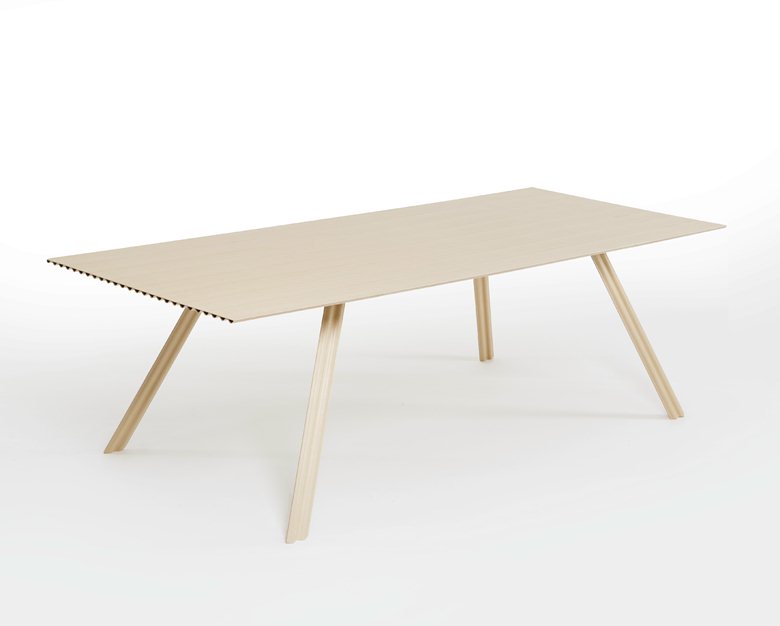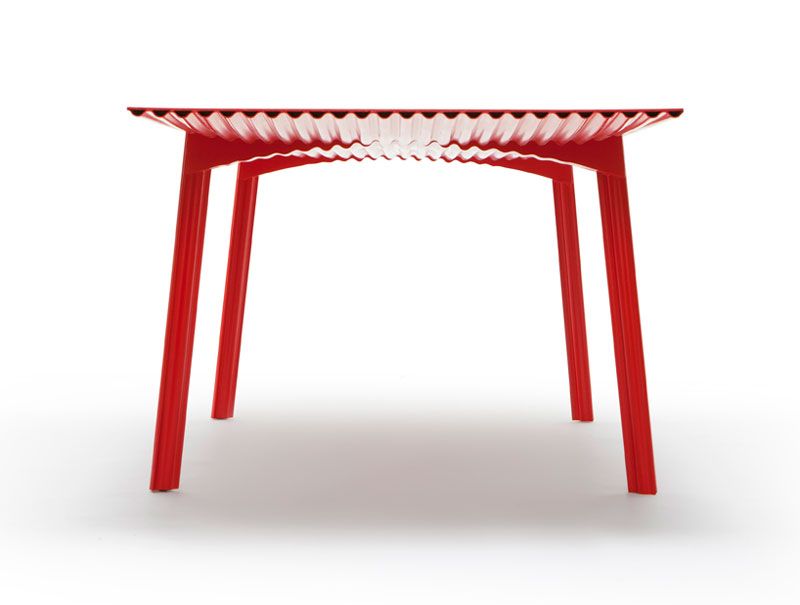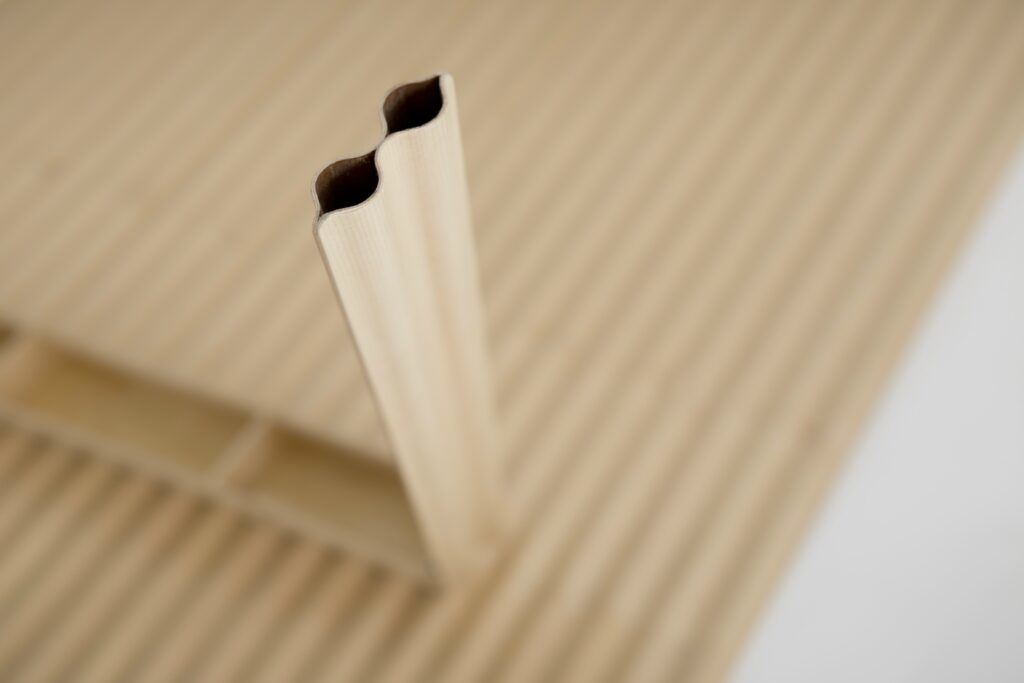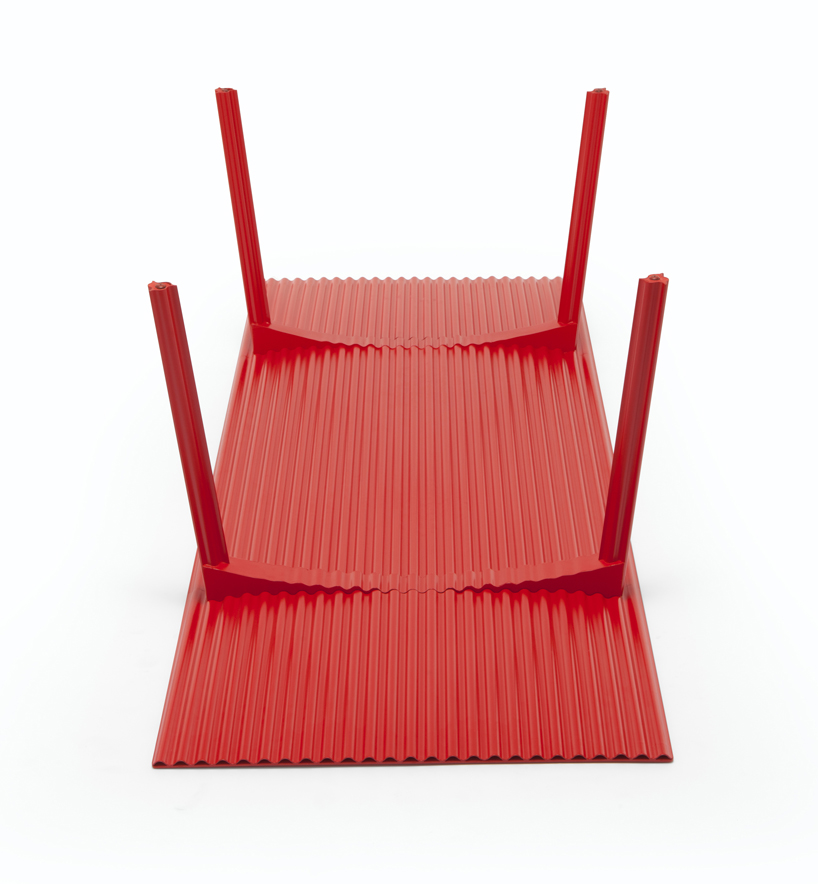World’s Lightest Table Weighs 20 Pounds

Working with manufacturer Corelam, designer Benjamin Hubert‘s work is laying claim to the title of the lightest timber table in the world.

Layers of wood form the corrugated support structure necessary to span under the object’s slim surface, all while managing to remain only a few millimeters thick.

Like its cardboard cousins, these corrugations coupled with a flat top make for an unusually strong shape, hence the ability to keep things thin and light throughout.

The bent and also-wood legs, as you might imagine, are also mostly hollow and similarly shaped to be light yet strong.

The resulting object can be assembled and (as shown above) carried by a single person despite, much less massive than it appears and using a fraction of the materials of a similarly-sized table.
“We gather global insights into how people live today to create solutions for tomorrow that inspire social responsibility. Ripple uses an innovative and sustainable new process for corrugating plywood to deliver an ultra-lightweight product with minimal environmental impact. Easily maneuverable by a single person, the table responds to the dynamic living trends shaping the future.”

“We used innovative 3mm corrugated plywood to deliver a huge strength-to-weight ratio for impressive usability and sustainability stats. “
Benjamin Hubert is an award-winning British design entrepreneur, founder and creative director of the design practice LAYER.
About the designers at LAYER, and their process:
“We are a close-knit team of industrial and digital designers, engineers, artists, experience experts, researchers, and branding specialists from around the world. We create products that will help define the way we live, work, travel and communicate in the future, from smart wearables and furniture systems, to the next generation of AI and communication tools.”
“At the outset of every project, we conduct in-depth research to discover and define relevant human behaviors and mindsets, which drive insights. Our research capabilities are multilayered – from ethnographic research in the form of user interviews and group workshops to analyzing global micro and macro trends. We also explore the cutting edge of material and technological possibility. During this phase, our research team works closely with our product design team to transform insights into tangible opportunities.”




